How to Recover From a Marathon
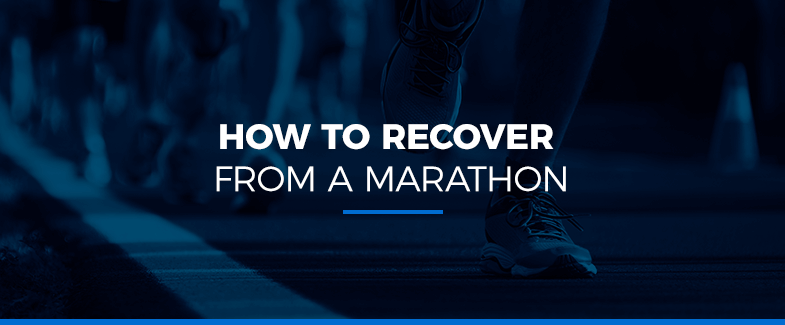
Are you preparing to run a marathon? If so, you should be exceptionally proud of yourself! That’s an accomplishment not many athletes achieve in their careers. This form of running pushes your body for more than 26 miles without breaks, so you’ll need to train yourself beforehand to ensure you’re in top shape.
However, pre-race conditioning won’t be your only priority. A marathon is an intense experience, so your recovery after the race matters, too. It’s a crucial step in taking care of your body so you can avoid injuries.
For most runners, post-marathon recovery involves various healing methods and tactics to keep your body in prime condition. Before you start your training, learn everything you need to know from this long-distance runner’s guide to recovery.
What Challenges Do Long-Distance Runners Face?
It’s best for seasoned and new runners alike to understand the challenges they may face in long-distance running. This type of running takes a toll on your body, which means various health issues can pop up if you don’t train properly. if you know what lies ahead, you can prepare to protect yourself.
Get yourself marathon ready and know what you’ll be up against while you’re training for running a marathon.
1. Motivation
Exercise is an activity that sometimes requires a little motivation. The initial rush of enthusiasm when registering for a marathon is exhilarating, as you’re anticipating the race and look forward to your training days. Once you start your training routine, your excitement may start to dwindle down. To ensure you stay motivated throughout the process, you should remember your goals and envision the finish line.
2. Tight Calf Muscles
Your muscles work hard while running. This physically demanding activity puts most of the work on your legs, so you might notice your calf muscles are a bit tender when training. Avoid that tight, achy feeling by ensuring you stretch before and after each run.

3. Hitting a Wall
You’re running at a smooth, steady pace, feeling ready to cross that finish line. Then, all of a sudden, you hit a wall. That’s what happens you become fatigued and drained.
Do your best to stay on top of your game by eating nutritious foods and drinking enough water so you stay fueled during your race.
4. Wearing Down Your Body
It’s not easy to perform at maximum capacity when you’re not feeling well — and, your motivation takes a hit, too. Be sure to limit how hard you push yourself, prioritizing rest, nutrition and hydration. This way, you can keep yourself strong and healthy as you approach your marathon. After you race, it’s essential to be just as on top of your well-being so you recover properly.
5. Inflammation
As a runner, you know that with intense exercise comes muscle inflammation and swelling. That’s why many experience these symptoms after they’ve completed a marathon. In some cases, your soreness may extend over a few days, so proper preparation before and after the race are necessary for a speedy recovery.
6. Losing Steam
You may slightly slow down while running, so it’s important to check in throughout the race. Maintaining a proper pace is key so you don’t burn yourself out too quickly. Additionally, one way to combat this long-distance challenge is to add interval workout sessions into your running routine. This trick will help improve your stamina and momentum during your long runs.
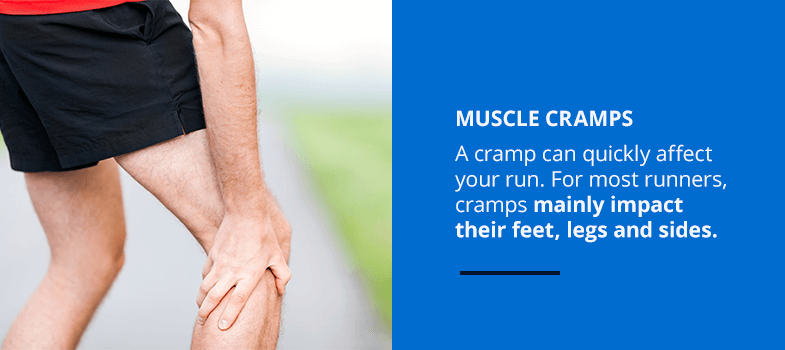
7. Muscle Cramps
A cramp can quickly affect your run. For most runners, cramps mainly impact their feet, legs and sides.
To limit your chances of developing cramps, you should stay hydrated so your muscles don’t seize up. It’s also smart to eat a diet with potassium and calcium, which work to reduce cramps.
8. Suppressed Immune System
A few days after you cross the finish line, you may notice you’re feeling unwell. That’s because you’ve put your body through a lot of work, so your immune system may be a bit compromised. Be ready to relax while nurturing your body to ensure your immune system is back in shape as soon as possible.
Preemptive Care for Marathon Training
Marathon training requires your body to accomplish a ton of work. Running, cross-training and keeping your body moving are wonderful for your health goals as long as you keep your needs in mind.
Preemptive care for running increases your protection against injuries and can help improve your fitness performance. From including warm-ups and cool-downs to your routines to fueling your body with the correct nutrients, your fitness routine should include preventive care tasks to enhance your abilities as an athlete.
Check out some helpful tips on how to train for a marathon from this long-distance training guide:
1. Heating and Icing
Many active individuals rely on heat and ice treatments to treat their sore muscles and other injuries. Applying heat to your body is beneficial before you start working out, as it can help loosen up your muscles so they’re ready to move and run long-distance. If you have a new injury, it’s best to avoid heat right away. Instead, use ice so you can reduce swelling, treat pain and help heal muscles after you exercise.
2. Adequate Sleep
Humans typically require around seven to nine hours of sleep to function properly throughout the day. Keep in mind that sleep also plays a vital role in any type of endurance training, especially for a marathon. Other than aiding in recovery, getting a full night’s rest helps you feel better and more productive during the day.
Many athletes attribute sleep schedules to their successful training and running performance. Make sure your sleep schedule is good for training, the day of your race and after during your recovery period.
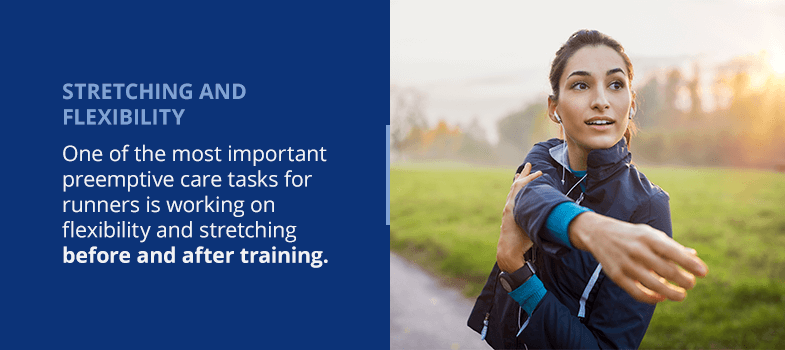
3. Stretching and Flexibility
One of the most important preemptive care tasks for runners is working on flexibility and stretching before and after training.
Setting aside time for stretching can help improve your running stride and your range of motion throughout your body. Your warm-up can include yoga, a quick 10-minute walk or a simple series of stretches. You can focus on stretches that target your quadriceps, hamstrings, Gluteal muscles and other lower-body muscles.
4. Massages
Many runners say massages help aid in the recovery process after intense long-distance runs. However, massages can help prepare your muscles before a race to ensure they’re in top shape. You don’t have to get a massage from a professional. Runners can learn how to work their own muscles and can purchase tools to help them recover. Items like foam rollers or medicine balls are helpful in massaging different areas of the body and can benefit your training schedule.
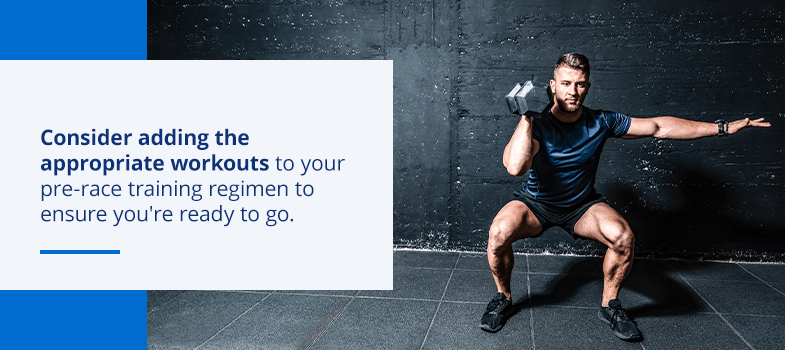
5. Weight Training and Strength Building
Running intervals and working on your speed are key parts of your training, but strength training is also important for a successful running performance. Adding weightlifting to your training schedule can help in preventing injuries, increasing power and running speed and improving coordination and balance. Consider adding the appropriate workouts to your pre-race training regimen to ensure you’re ready to go.
6. Planning
Daily routines can become repetitive — and as a result, your motivation for running may start to weaken. Instead of completing the same routine every day or deciding what you’ll be working out the day of, try planning a week of workouts ahead of time. Planning your workouts can be a game-changer since you’ll know you’re progressing steadily on your fitness journey. You’ll also be able to schedule rest days, which are essential to help care for your body.
7. Hydration
Hydration is key to a great workout and keeping your body healthy. The amount of water a person should consume varies based on certain factors, like how much they sweat, the heat or weather and how long they plan to work out. Some athletes like sports drinks for the added electrolytes, but water is really all you’ll need to stay hydrated. Before running a marathon, be sure to consume enough water so you’re in the best shape possible on game day.

Marathon Recovery Tips and Tricks
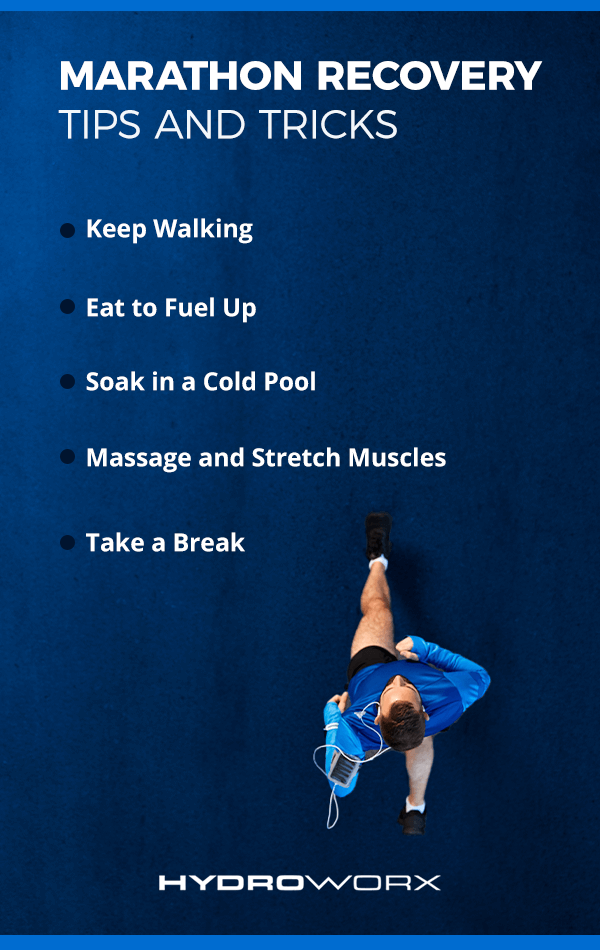
After you stride across the finish line, you might be ready to completely crash and lay down for a few days. On the other hand, you may want to take a quick rest so you can get back to your normal training. Both of these options are not the best for a successful recovery after an extreme long-distance run.
While you should rest, it’s important to tackle a few different methods during your recovery process to aid your body’s needs. This long-distance training guide will provide helpful strategies to create a useful recovery plan for body and muscle recovery post-race.
1. Keep Walking
You did it! You’ve made your way across the finish line and you’re soaking in all the emotions of completing your 26.2-mile race. Your body likely feels exhausted and ready to rest, so your first instinct might be to take a seat and relax. However, it’s best to keep your legs moving and walk around.
After you’re completed your marathon, you should continue walking the route. Your body is still in active mode after running a long distance, so dropping to the ground for rest is not the best way to transition. Give your body time to calm down by slowing to a walk after you finish running. Then, you can take a much-needed break once you finish a lap.
2. Eat to Fuel Up
After your race, you’ll need to replenish your body with more fuel since you utilized a majority of it. Around 30 minutes to an hour after the marathon, eat a small snack. Later in the day, you’ll usually feel ready to eat a larger meal. Consuming foods that contain the macronutrients vitamins your body is craving after working hard is essential to recovery. Look for foods that include protein and carbohydrates so your body can speed up the recovery process.
3. Soak in a Cold Pool
A soak in cold or ice water is beneficial for reducing muscle inflammation as it constricts your body’s blood vessels. Many people in the running community like to soak their bodies after a long run as a part of their recovery process. Once you complete the marathon, try to schedule a time for a quick 10-minute ice bath in a pool or tub. The sooner the swelling in your muscles dissipates, the sooner you’ll be able to get back into training.
4. Massage and Stretch Muscles
Taking time to massage and stretch your muscles is a must for safely recovering after a marathon. Be sure to properly hydrate and refuel once you’re finished with your race. Then, you can use a foam roller to work out your muscles, specifically in your legs. If you want to schedule a professional massage, be sure to give your body a 24 hour rest period beforehand.
5. Take a Break
After your huge accomplishment, you might have the motivation to get back to training and sign up for your next race. However, pushing your body right after a marathon is not the best idea. It’s important to put yourself first, resting so your body is adequately prepared for future marathons. Instead of worrying about when you’ll run long-distance next, start crafting a plan for recovery and how you’ll slowly get back to normal training.
Not everyone’s recovery plan will be identical. It’s important to listen to your body and take care of it after your marathon. If you’re unsure where to start when outlining a recovery plan, take some ideas from this example:
- Day 1-3: Refrain from any running or crosstraining workouts. Focus on your diet, ensuring you’re eating enough fruit, carbohydrates and protein. You can schedule a light massage and relax your muscle by soaking in a cold tub or pool.
- Day 4-7: Start getting back into your training routine slowly by scheduling one day of running. It’s best to take it easy on this run, going only two or four miles. If you want to stay more active, you can include two days of easy cross-training to get your blood pumping. Continue focusing on your healthy diet and care for your muscles with a deep tissue massage or an Epsom salt bath.
- Day 7-14: You’ll begin to start adding more training days to your schedule. Schedule three to four days of running. Each run should be around four to six miles. You may also include three days of easy cross-training.
- Day 14-21: You can start practicing your normal training schedule around this time. Schedule days for running and crossing-training, being sure to add at least one rest day to optimize your fitness routine.
It’s helpful to remember you’re taking this recovery period to safely get your body back to normal. You can focus on how you’ll be able to gradually return to training, not worrying about losing any of your running or fitness abilities during this rest time. Overtraining will likely do more harm than good, so utilize as much recovery time as your body needs.
What Are Common Running Injuries?
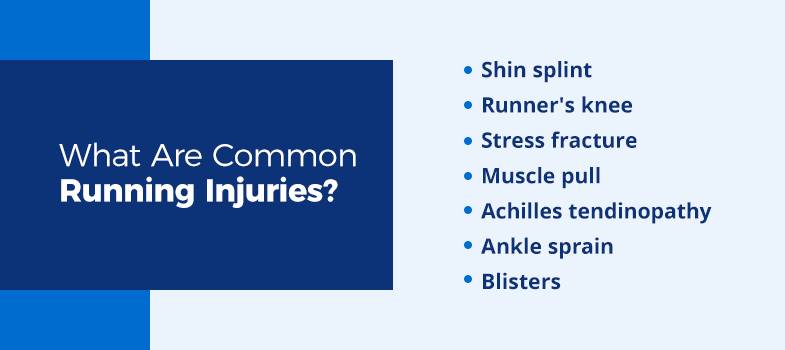
A common reason runners experience injuries is because they overwork themselves in their training.
Take a look at some of the most common injuries runners experience and how you can prevent them:
- Shin splints: A shin splint describes a pain that a runner may feel on the front of their leg below the knee. Shin splints are common for runners, especially after long-distance runs or running for numerous days in a row. Treatments for a shin split can include stretching, resting and taking it easy on your next couple of workouts.
- Runner’s knee: Runner’s experience this injury from overdoing their workouts. You can experience pain behind or on top of the knee cap, especially when you go up a set of stairs, squat or bend your knees for a long time. You can usually treat runner’s knee with rest or pain relievers, and in some cases, physical therapy.
- Stress fracture: Pushing yourself too hard may result in a stress fracture. This injury is a slight crack in a bone that can cause a runner pain and discomfort. Rest is necessary for healing, and your injury will continue to hurt and possibly become more serious if you proceed to work out.
- Muscle pull: A muscle pull or muscle strain happens when your muscle has a small tear from overstretching or overworking. Common ways to treat muscle pulls are rest, ice, compression and elevation.
- Achilles tendinopathy: This injury describes the inflammation of the Achilles tendon, which is the tendon connected to the back of the heel and the calf. Achilles tendinopathy is commonly known as tendinitis. This causes stiffness and pain near the tendon. You can treat this common running injury with rest, stretches and icing treatment.
- Ankle sprain: Runners can get a sprained ankle by rolling or twisting your ankle and tearing or stretching ligaments. You can treat this pain with rest, ice, compression and elevation.
- Blisters: Runners can get blisters from the friction that happens between shoes and socks on the skin. You can prevent blisters by slowly using a new pair of sneakers, wearing double-layered socks or using petroleum jelly on spots susceptible to blisters.
Ideas for Long-Distance Running Recovery
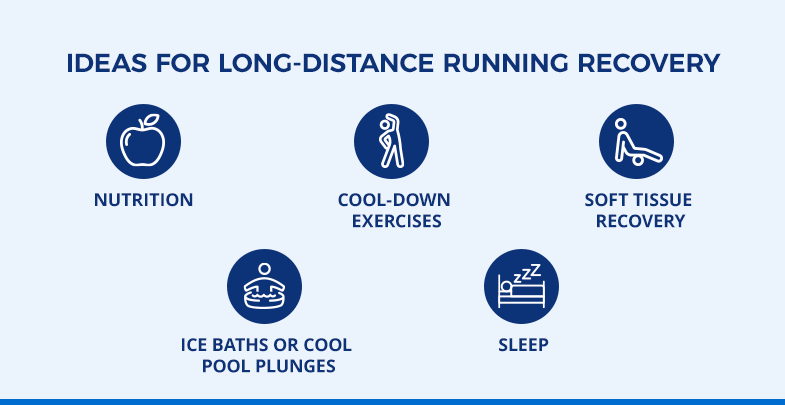
Recovering from a marathon doesn’t mean you need to see a specialist. You can get back to your normal, fitness-loving self from your own home. After you’ve finished your marathon, focus on these areas of recovery from a run at home:
- Nutrition: Replenish your body with food that will help heal and nourish your body. Try to stick with foods that contain protein, carbohydrates and healthy fats. These foods will help you feel great, bringing your immune system back to normal.
- Cool-down exercises: Cool-downs are beneficial for preventing injuries. After you run, your muscles might stiffen up or be sore. During your rest time, try simple cool-down recovery exercises to move your muscles.
- Soft tissue recovery: Compression garments and foam rollers are both great ways to help with soft tissue recovery. They can help with muscle soreness and speed up recuperation time.
- Ice baths or cool pool plunges: Ice bath recovery is helpful with muscle inflammation and pain, and you can take ice baths right at home. However, it can also be helpful to soak in a pool so you have enough space to submerge your body.
- Sleep: Set a sleep schedule to follow while you’re recovering after a marathon. Try eliminating your electronics at bedtime and make your sleep space cozy, dark and set at a comfortable temperature to ensure you get a quality night’s sleep.

Running a marathon is a big deal — and your preemptive care and recovery process should be just as important. You put in copious amounts of effort and time into training for this huge race, so you should invest the same energy into caring for your body. Give your body the relief it deserves and find a HydroWorx pool near you.
HydroWrox offers aquatic therapy pools for rehabilitation and wellness. Many health and wellness centers use our pools as a method for athletes and older adults. Our products are a fantastic resource for runners who need the perfect solution to care for their muscles and body after long-distance runs. Contact us today to learn more about how we can help you get back to doing what you do best.





